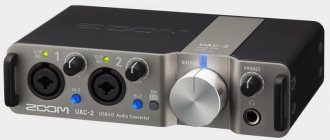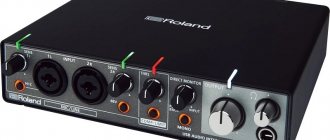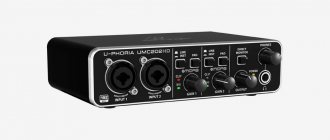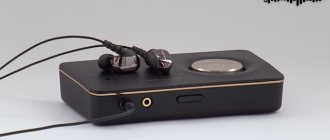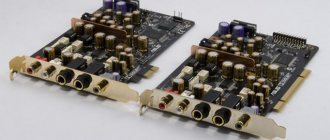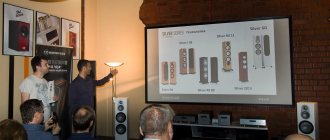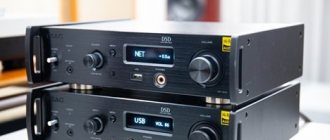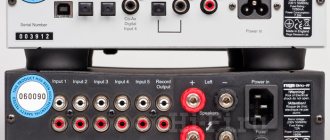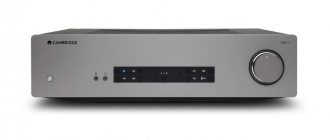Maxim Zhukov 05/05/2019 14533
$37 7.6/10 Sound card 2010
ASUS Xonar DG is an inexpensive internal gaming sound card with a headphone amplifier and front-panel connectivity. The card was initially positioned as a replacement for the audio interface built into the motherboard
Asus has long been firmly entrenched in the production of gaming accessories. They have mice, keyboards, headphones and much more. And, of course, sound cards. From the simplest and cheapest to the very expensive and advanced. Is it worth buying ASUS Xonar DG to replace the built-in audio system? Rather yes than no.
Asus Xonar DG PCI
pros:
- Price;
- Sound quality for games;
- Headphone Amplifier;
Minuses:
- Branded software;
- Drivers;
- Not suitable for music and recording
Characteristics, equipment
ASUS Xonar DG Specifications:
- Type: internal sound card
- Sound card format: 5.1
- Connection interface: PCI
- ASIO support: ASIO 2.0
- EAX support: EAX 2.0
- Other standards: DirectSound 3D, DirectSound, A3D, OpenAL
- Technologies: GX 2.5 Game Audio Engine, VocalFX, Xear 3D, FlexBass, Magic Voice, Smart Volume Normalizer, Equalizer, Virtual Speaker Shifter
- Chipset model: C-Media 8786
- Number of playback channels: 6
- DAC models: Cirrus Logic CS4361, Cirrus Logic CS4254
- DAC bit size: 24 bit
- Maximum DAC frequency: 96 kHz
- Signal-to-noise ratio, dB: 105 dB
- THD+ noise: 0.0025%
- Built-in headphone amplifier: yes
- Op amp model in headphone amplifier: Cirrus Logic CS4254
- Number of audio recording channels: 2
- Microphone phantom power: no
- ADC model: integrated into the chipset
- ADC capacity: 24 bit
- Maximum ADC frequency: 96 kHz
- Signal to noise ratio: 103 dB
- THD+ noise: 0.0022%
- Analog outputs (unbalanced): 3x jack 3.5 mm
- Analog inputs (unbalanced): 3.5 mm jack
- Digital outputs: S/PDIF optical
- Number of microphone inputs: 1
- Number of independent headphone outputs: 1
- Length: 170 mm, width: 64 mm
- Price: $37
Equipment:
- ASUS Xonar DG sound card;
- Mounting bar for low-profile enclosures;
- Disk with software
- Documentation
Asus Xonar DG sound card
ASUS Xonar DG is the most basic sound card in the line. The DGX model features a PCI-Express connection. Models DS and DSX also differ from each other only in the connector. There are different DACs, but the sound quality doesn't really benefit, given the higher price and the lack of a headphone amplifier.
Focusrite Scarlett Solo 3rd Gen
The model has a USB Type-C connection bus for faster data transfer and faster operation (compatible with USB 2.0/3.0). There is no such connection in any of the listed samples. Balanced TRS outputs effectively eliminate hiss and hum when connecting monitors with balanced inputs. The instrument input circuit for direct connection of a guitar or bass has been completely updated, 6 dB has been added at the input, so even when connecting guitars with active sensors there will be no overload. The Focusrite Scarlett Solo 3rd Gen features one new third generation preamplifier, offering up to 56dB of gain. It has a switchable Air mode, which emulates the technology of the same name used in the legendary ISA preamps. The interface supports sampling rate modes up to 24 bits (192 kHz). The model features independent gain controls that set the input signal levels. Connections include one XLR microphone input, TRS instrument input, headphone output, 2 TRS outputs for studio monitors, and a USB-C port. Solo 3rd Gen comes with the following software packages: Avid Pro Tools First, Ableton Live Lite, XLN Audio Addictive Keys, Softube Time and Tone Bundle, Focusrite Red Plug-in Suite, Redrite Focus 3 Plug.
Advantages:
- Beautiful view.
- Connection via USB Type-C.
- Balanced TRS outputs.
- Built-in 3rd generation preamplifier.
- A large set of programs included in the package.
Flaws:
- Very overpriced.
- When turned on there is a loud clicking sound in the speakers.
- Problems installing software.
The new generation of Focusrite Scarlett SOLO 3rd Gen sound card looks more interesting and attractive than the previous generation. The redesigned hardware has improved the parameters, and the new mode for emulating proprietary AIR preamplifiers distinguishes the interface from other budget cards. Taking into account the balanced outputs that have appeared, we can recommend them for sound recording and music creation in the home studio. The Focusrite Scarlett SOLO 3rd Gen features enough capabilities for use with inexpensive microphones and entry-level studio monitors. But the price is clearly too high. I would recommend, for example, the Creative Sound Blaster Z, which is not inferior in capabilities and sound quality to the Focusrite Scarlett Solo 3rd Gen. Price - 9900 rubles. On the Yandex portal. Market 80% of buyers recommend this product.
Kit and build quality
The buyer receives the ASUS Xonar DG in a beautiful box, which, in addition to the card, contains only a bracket for low-profile cases, a disk with drivers and documentation . Overall, it's enough. I am glad that the box has a “compartment” for the card; it does not “dangle” from side to side during transportation.
The box also includes key features of the sound card and information about the hundreds of awards the Xonar series has won. True, not specifically with this board.
